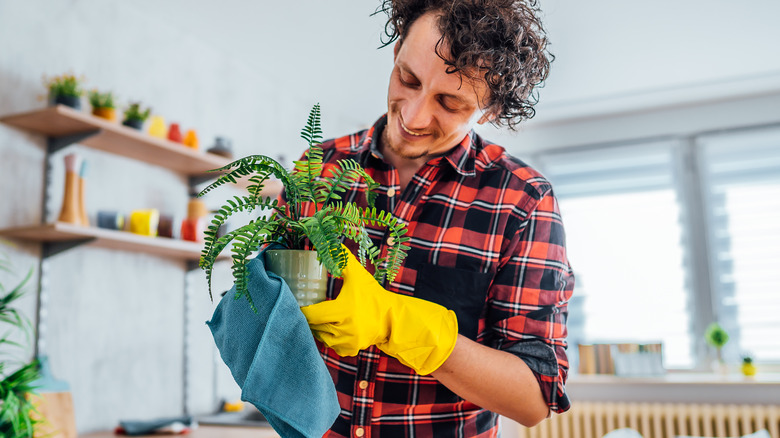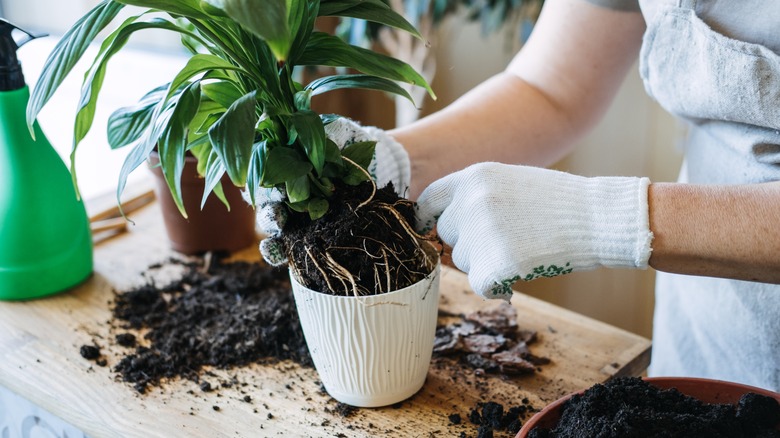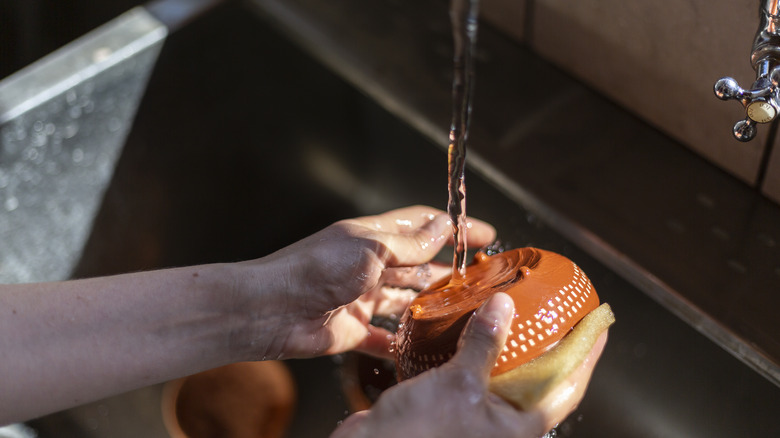Should You Be Cleaning Your Flower Pots?
Gardeners who love annuals like zinnias, petunias, and cosmos know that when the season ends, so go the beautiful blooms. The remnants of the flower are composted or tossed, and the flower pot is set aside for another day. Reusing pots is an economical practice that you can repeat with every season, but there's one crucial thing you must do before you set that flower pot off to the side. You should clean your flower pots in between every use; otherwise, you might put your new flowers at risk.
Most fungi and bacteria need moisture to survive. Drying your pots can help eliminate some disease-causing bacteria, but there are species of fungi that can thrive for years in dry soil. So while the flower and its roots may be long gone, diseases like root rot can still spread. New flowers can become infected before they can even attempt to thrive. Thoroughly cleansing and sanitizing flower pots is the only way to ensure they're safe to reuse.
Why you should clean your flower pots
Cleaning out flower pots you intend to reuse might seem counterintuitive, especially if you want to grow the same plant. Soil is packed with nutrients, it's true, but it can also harbor bacteria and fungi. Diseases like root rot and damping off linger in leftover soil and plant matter, so by not cleaning a flower pot, you open the door for such lingering diseases to spread to new roots and leaves. So simply dumping a pot isn't enough to rid it of any potential disease.
Sanitizing flower pots before using them again is the only way to be certain they won't transfer disease to new plants. No matter the material of your pots, you can clean them thoroughly with hot water, vinegar or bleach, and a hard-bristled scrubber. The scrubbing will dislodge any compacted soil and the cleansing solution is powerful enough to kill bacteria and fungi. Cleaning your plant pots should become a regular part of your gardening practice.
The right way to clean a flower pot
To clean a flower pot, start by removing its contents. Soil and dead plants that don't have any diseases can go straight into the compost. Then, submerge the pot in a solution of 4 parts water and 1 part vinegar. A solution of 1 part bleach and 9 parts water is also suitable, but note bleach can cause respiratory and skin irritation, so use gloves for the best protection. Let the pot soak for at least 10 minutes; this will allow enough time for the mixture to kill any bacteria.
Remove the pot from the sanitizing solution and rinse it in clean water. Next, scrub the flower pot with a wire brush or steel wool. You can add some mild dish soap to help you remove any stuck-on soil. After you've thoroughly cleansed the pot, it's ready to be used again or stored away. Be sure to properly store your terracotta pots at the end of the growing season so they last until spring.


